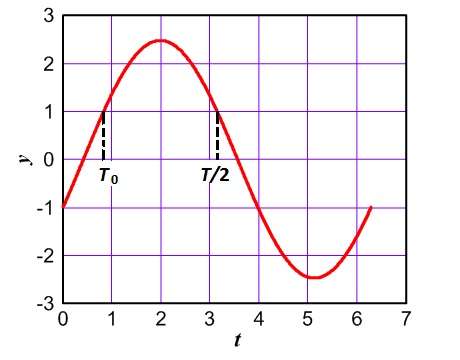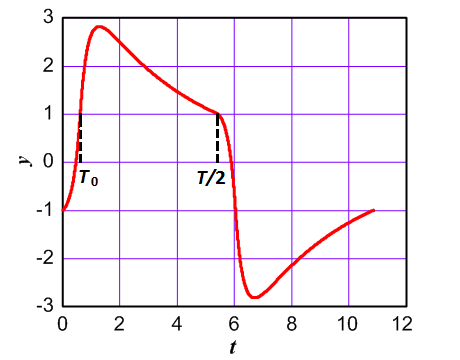Biryukov equation
The Biryukov equation (or Biryukov oscillator), named after Vadim Biryukov (1946), is a non-linear second-order differential equation used to model damped oscillators.[1]

The equation is given by
where ƒ(y) is a piecewise constant function which is positive, except for small y as
Eq. (1) is a special case of the Lienard equation; it describes the auto-oscillations.
Solution (1) at a separate time intervals when f(y) is constant is given by[2]
Here , at and otherwise. Expression (2) can be used for real and complex values of .
The first half-period’s solution at is

The second half-period’s solution is
The solution contains four constants of integration , , , , the period and the boundary between and needs to be found. A boundary condition is derived from continuity of ) and .[3]
Solution of (1) in the stationary mode thus is obtained by solving a system of algebraic equations as
; ; ; ; ;.
The integration constants are obtained by the Levenberg–Marquardt algorithm. With , , Eq. (1) named Van der Pol oscillator. Its solution cannot be expressed by elementary functions in closed form.
References
- H. P. Gavin, The Levenberg-Marquardt method for nonlinear least squares curve-fitting problems (MATLAB implementation included)
- Arrowsmith D. K., Place C. M. Dynamical Systems. Differential equations, maps and chaotic behavior. Chapman & Hall, (1992)
- Pilipenko A. M., and Biryukov V. N. «Investigation of Modern Numerical Analysis Methods of Self-Oscillatory Circuits Efficiency», Journal of Radio Electronics, No 9, (2013). http://jre.cplire.ru/jre/aug13/9/text-engl.html